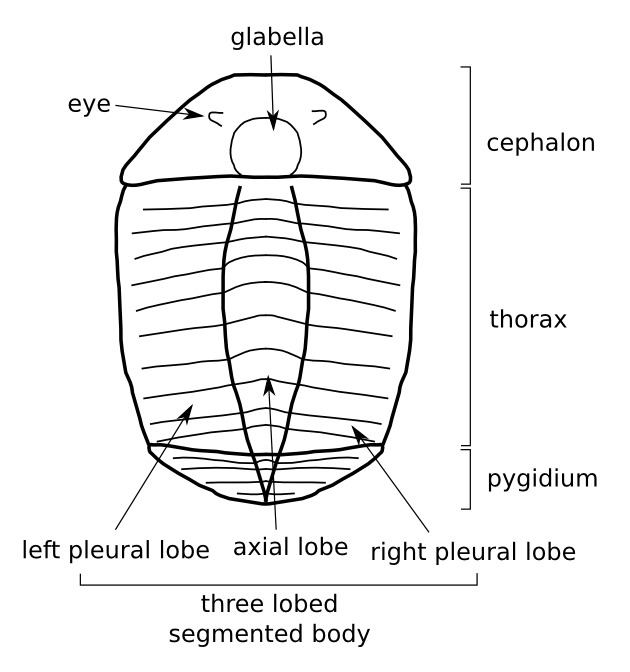- Home
- Rocks
- Type fossils
- Fossil Specimens
- Minerals
- Glossary
- Stratigraphic Chart
- Michel-Levy Chart
- Classification of igneous rocks
- University of Cambridge
- Department of Earth Sciences
- ESC Library
- Moodle
- Sedgwick Museum
- DoITPoMS
- Mindat.org
- Microfossils
- Bryozoans
- Webmineral
- Tree of Life
- CrystalMaker
- Virtual Microscope
Trilobite
Taxonomy
Phylum: Arthropoda
Class: Trilobita
Distinctive features
Pygidium (tail)
Thorax (body)
Cephalon (head)
Paired appendages (not often preserved)
Three lobed longitudinal division of body (2x pleural, 1x axial)
Calcitic exoskeleton
Segmented body
Glabella
Eyes (holochroal or schizochroal; only present in some groups)
Eye ridges
Occipital ring
Axial rings
Stratigraphic range
Cambrian to Permian (most common Cambrian to Silurian)
Way of life
Trilobites lived as planktonic, nektonic, epifaunal and infaunal organisms in deep and shallow marine environments. They lived as predators, filter feeders, deposit feeders, particle feeders, scavengers and even symbiotically.
By looking at the functional morphology of the trilobite in question you can be more specific about how it lived, by looking at body shape, size, legs, eyes and other characters.
Advanced notes
Trilobites were very abundant during the Palaeozoic. Their preservation potential was increased further as they moulted their exoskeletons periodically as they grew. This means that one trilobite left numerous hard skeletons or partial skeletons as it grew, each of which has the potential to fossilise.

